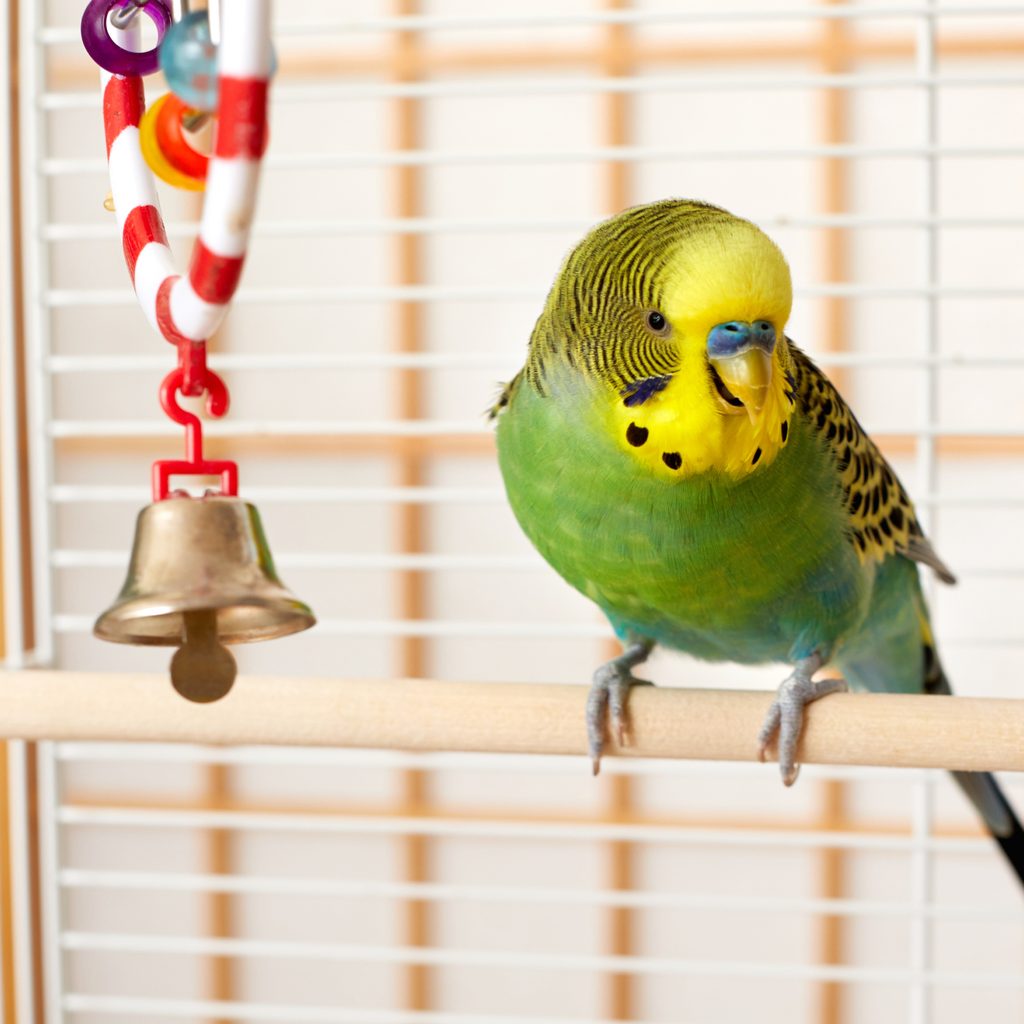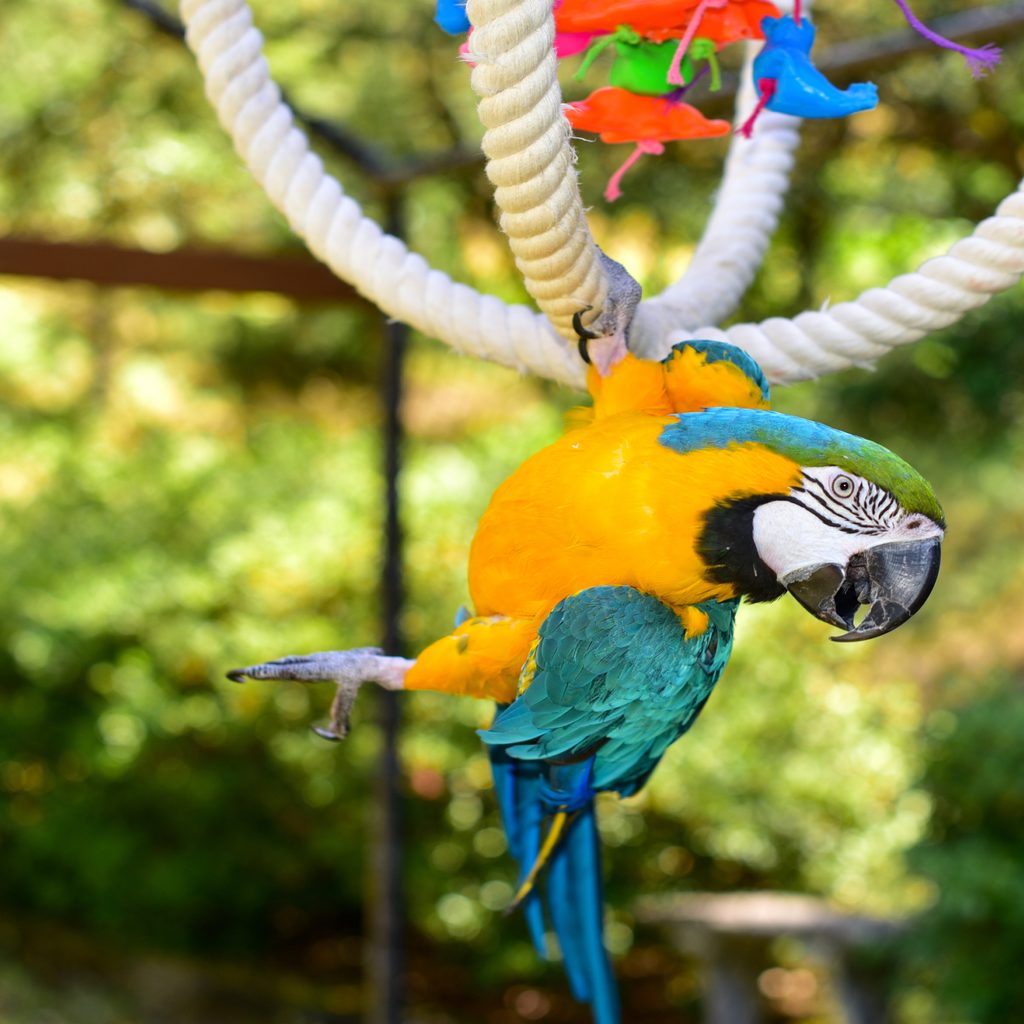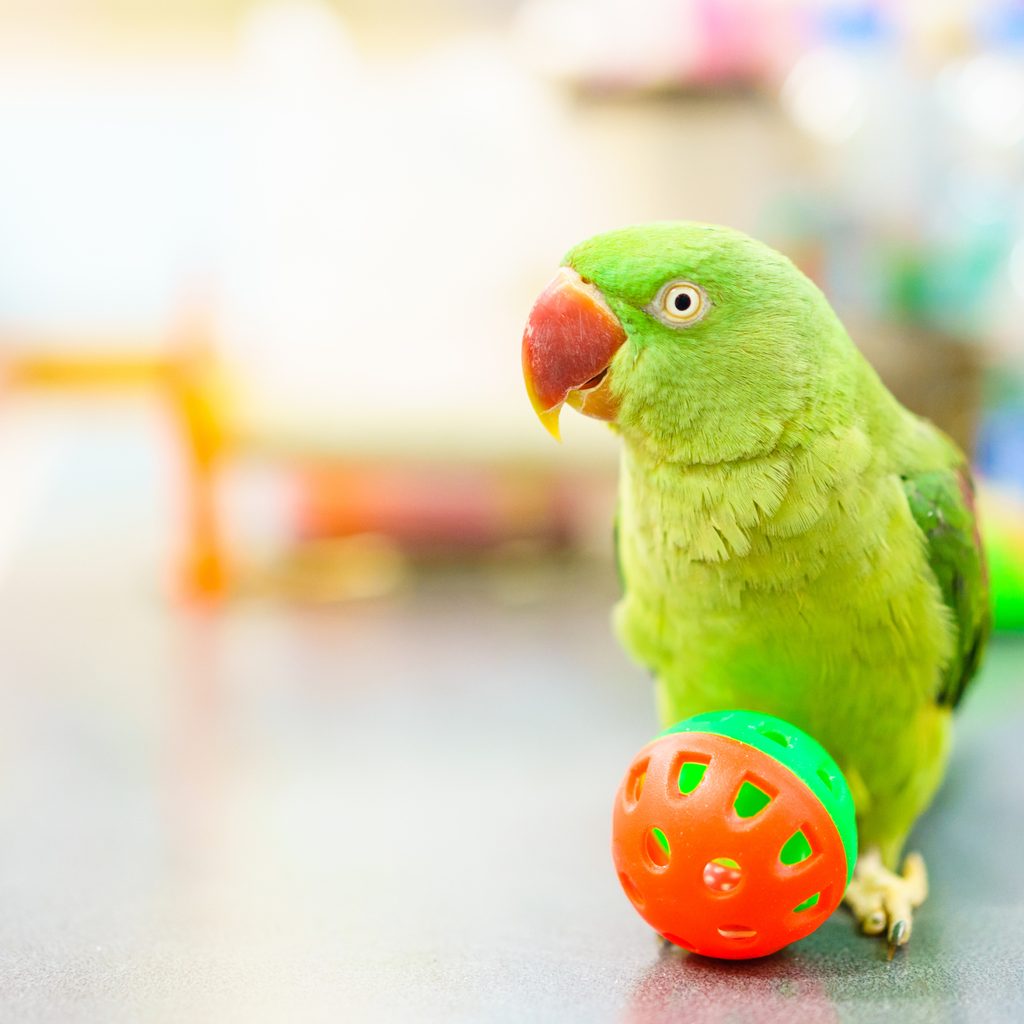Birds are intelligent and social creatures who need stimulation and interaction. You might find them tousling each other, engaging with toys, or flying in loops just for fun. Like many of the furrier pets, they enjoy playing games with their humans as well. You can set up these pet bird games for them to play with you and alone so your bird stays happy and healthy.

How to play with your bird
Many birds are social animals whom you’ll find flocking with their friends out in the wild. Your bird probably doesn’t have a herd to hang out with, so you’ll have to jump in to play with him sometimes instead. Your pet’s needs will vary widely based on the species, but there are some common games you can try and see what gets your avian engaged.
Exploring your home
No matter what type of bird you have, your guy needs exercise and space to move around. Many birds will enjoy leaving their cage or perch to explore and discover new things. Curious by nature, your pet will thrive if given an opportunity to seek out different things. It’s best to set aside a safe room for your bird, especially if he isn’t used to having free rein. Design this carefully and avoid hazards like sharp objects and ceiling fans.
In addition to pet proofing, you can add attractions for your bird to examine. Special treats hanging from different areas will allow him to get a little thrill finding his snack. This will also encourage exercise as he can fly about the room to discover food. Make sure there are lots of areas for him to rest and even a spot for a cozy nap. Remember, too, that your bird might make a mess when out of his cage, so take care to cover the floor with newspaper or an old sheet.

Gymnastics in his cage
Even in your bird’s cage or designated home, you can help him get the exercise needed to stay fit. Birds like to play with swings, hoops, and ladders. Try out a few kinds and see what your bird takes a liking to. Keep it interesting by mixing things up in the cage. One way you can do this is by purchasing a set of objects and switching them out when you see your pet growing tired of a particular toy.
When you first introduce a new item, let your bird check it out on their own first. Birds will love to pick at a new ring or stairway and may come up with ways of interacting that didn’t even occur to you. Once your bird understands the new plaything, you can demonstrate how to use it and try out a few games. If your bird is hand trained, you can act as a guide, placing your pet on or under the new toys. Dangle a treat when you want your bird to jump up or down to facilitate moving around his new playground.
Fetch and other tricks
You read that right. Many birds will chase in the wild, and you can simulate this behavior in your home. Birds like to learn tricks and will often pick up new ones quickly. Remember, your pet is very curious and, like other animals, wants praise and attention from you. Use positive reinforcement to get your bird to learn.
Assuming your bird is hand trained, you can start with some easier tricks and work your way up. You’ll both have fun when you teach him to point, retrieve, wave, and shimmy. Birds can learn different cues, but watch for signs that he’s becoming confused. Stick with it, and he’ll have his newest party trick down in no time.

Toys and accessories
No matter which games your bird decides to play with, you can have fun watching him figure out his latest toy. It’s not just magpies who like shiny objects; your singer will love to play with mirrors, disco balls, and chains. These gadgets bring out the curious side of a bird. Other objects like rope, string, and wood allow him to peck at something. Pet birds like destroying their toys and that’s okay. They’re often mimicking how they might forage or nest in the wild. Stock up on extras and let him pick away as much as he likes.
As with anything to do with your pet, safety remains concern one. Always proof rooms he might enter and purchase toys specifically for birds. Avoid things that he might get caught in or accidentally swallow. With a few new items in your household, you’ll keep your avian excited about the world around him and eagerly awaiting playtime.



